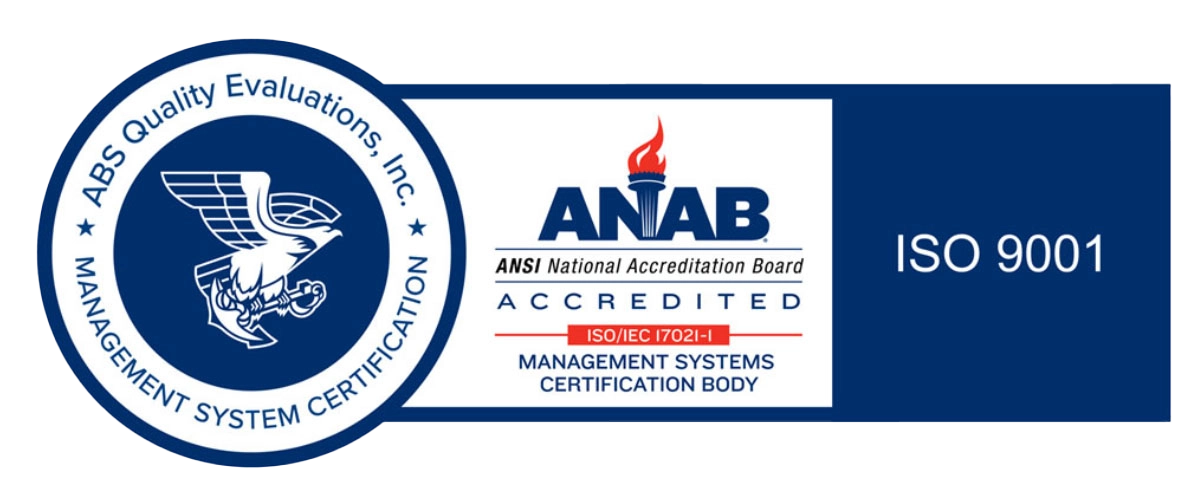S-Series, NPO, Medium Power, General Use Hi-Q Capacitor Multi-Layer Capacitors
Johanson S-series are High-Q MLCC, ultra-low loss ceramic capacitors for high frequency applications. These low ESR capacitors are typically used in consumer, infrastructure and industrial markets.
In addition to their excellent performance, reliability and consistency in volume production has been the focus.
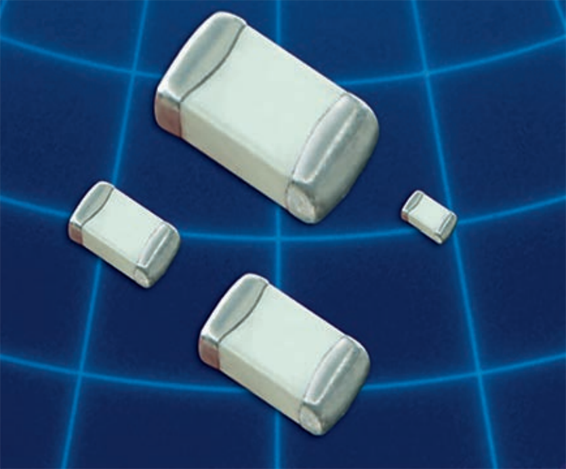
Key Features:
- Standard EIA Size: 0402
- Capacitance Range 0.2 - 33 pF
- Miniature Size
- Used in Portable Electronics
- Lowest ESR in Class
- Ultra-high Q performance
- Temperature range is -55° C to +125° C*.
- High Self-Resonance Frequencies
- Exhibits NP0 temperature characteristics
- Automotive version available
(AEC-Q200) - RoHS Compliant
Circuit Applications
- Antenna Matching
- Matching Networks
- High Frequency Communication
- Portable wireless products
- All wireless applications
- All areas Medical
- Power Matching
- Zigbee, 802.11
- Mobile phone
- Smart phones
- WiFi
- Satellite
- Optical
- Sensors
- Military
- Industrial
- Automotive
S-Series Capacitor Information
Capacitance Range
| Case Size | Capacitance |
|---|---|
| 0402 | 0.2 - 33 pF |
| 0603 | 0.2 - 100 pF |
| 0805 | 0.3 - 220 pF |
Voltage Ratings
| EIA Size/Cap. Value | RF Power Applications | ||||
|---|---|---|---|---|---|
| 0402 (R07S) | 0603 (R14S) | 0805 (R15S) | |||
| pF | Code | ||||
| 0.1 | 0R1 | A B C D |
50/250V | 250V | |
| 0.2 | 0R2 | 50/250V | 250V | ||
| 0.3 | 0R3 | 50/250V | 250V | 250V | |
| 0.4 | 0R4 | 50/250V | 250V | 250V | |
| 0.5 | 0R5 | 50/250V | 250V | 250V | |
| 0.6 | 0R6 | 50/250V | 250V | 250V | |
| 0.7 | 0R7 | 50/250V | 250V | 250V | |
| 0.8 | 0R8 | 50/250V | 250V | 250V | |
| 0.9 | 0R9 | 50/250V | 250V | 250V | |
| 1.0 | 1R0 | 50/250V | 250V | 250V | |
| 1.1 | 1R1 | 50/250V | 250V | 250V | |
| 1.2 | 1R2 | 50/250V | 250V | 250V | |
| 1.3 | 1R3 | 50/250V | 250V | 250V | |
| 1.4 | 1R4 | 50/250V | 250V | 250V | |
| 1.5 | 1R5 | 50/250V | 250V | 250V | |
| 1.6 | 1R6 | 50/250V | 250V | 250V | |
| 1.7 | 1R7 | 50/250V | 250V | 250V | |
| 1.8 | 1R8 | 50/250V | 250V | 250V | |
| 1.9 | 1R9 | 50/250V | 250V | 250V | |
| 2.0 | 2R0 | 50/250V | 250V | 250V | |
| 2.1 | 2R1 | 50/250V | 250V | 250V | |
| 2.2 | 2R2 | 50/250V | 250V | 250V | |
| 2.4 | 2R4 | 50/250V | 250V | 250V | |
| 2.7 | 2R7 | 50/250V | 250V | 250V | |
| 3.0 | 3R0 | 50/250V | 250V | 250V | |
| 3.3 | 3R3 | 50/250V | 250V | 250V | |
| 3.6 | 3R6 | 50/200V | 250V | 250V | |
| 3.9 | 3R9 | 50/200V | 250V | 250V | |
| 4.3 | 4R3 | 50/200V | 250V | 250V | |
| 4.7 | 4R7 | 50/200V | 250V | 250V | |
| 5.1 | 5R1 | B C D |
50/200V | 250V | 250V |
| 5.6 | 5R6 | 50/200V | 250V | 250V | |
| 6.2 | 6R2 | 50/200V | 250V | 250V | |
| 6.8 | 6R8 | 50/200V | 250V | 250V | |
| 7.5 | 7R5 | 50/200V | 250V | 250V | |
| 8.2 | 8R2 | 50/200V | 250V | 250V | |
| 9.1 | 9R1 | 50/200V | 250V | 250V | |
| 10 | 100 | F G J K |
50/200V | 250V | 250V |
| 11 | 110 | 50/200V | 250V | 250V | |
| 12 | 120 | 50/200V | 250V | 250V | |
| 13 | 130 | 50/200V | 250V | 250V | |
| 15 | 150 | 50/200V | 250V | 250V | |
| 16 | 160 | 50/200V | 250V | 250V | |
| 18 | 180 | 50/200V | 250V | 250V | |
| 20 | 200 | 50/200V | 250V | 250V | |
| 22 | 220 | 50/200V | 250V | 250V | |
| 24 | 240 | 50/200V | 250V | 250V | |
| 27 | 270 | 50/200V | 250V | 250V | |
| 30 | 300 | 50V | 250V | 250V | |
| 33 | 330 | 50V | 250V | 250V | |
| 36 | 360 | F G J K |
250V | 250V | |
| 39 | 390 | 250V | 250V | ||
| 43 | 430 | 250V | 250V | ||
| 47 | 470 | 250V | 250V | ||
| 51 | 510 | 250V | 250V | ||
| 56 | 560 | 250V | 250V | ||
| 62 | 620 | 250V | 250V | ||
| 68 | 680 | 250V | 250V | ||
| 75 | 750 | 250V | 250V | ||
| 82 | 820 | 250V | 250V | ||
| 91 | 910 | 250V | 250V | ||
| 100 | 101 | 250V | 250V | ||
| 110 | 111 | 250V | |||
| 120 | 121 | 250V | |||
| 130 | 131 | 250V | |||
| 150 | 151 | 250V | |||
| 160 | 161 | 250V | |||
| 180 | 181 | 250V | |||
| 200 | 201 | 250V | |||
| 220 | 221 | 250V | |||
Resonant frequencies
The Series Resonant Frequency is highly dependent on the substrate, pad dimensions, and measurement method. The below charts are for reference only.
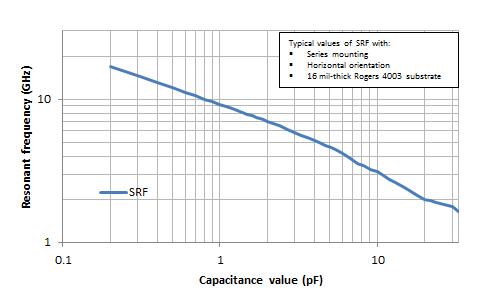
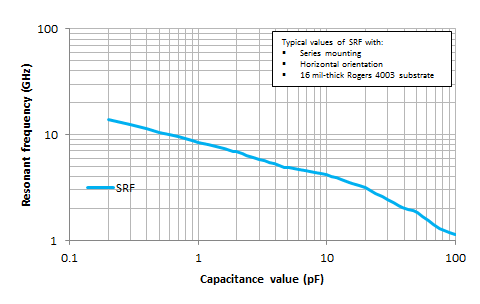
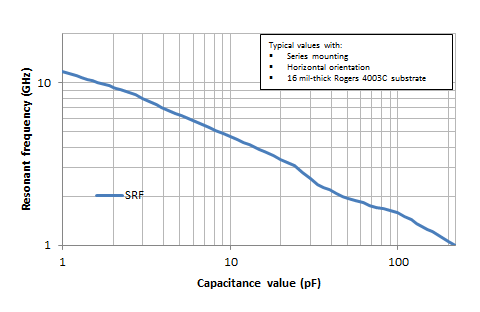
ESR curves
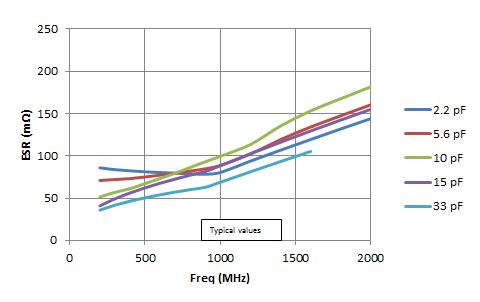
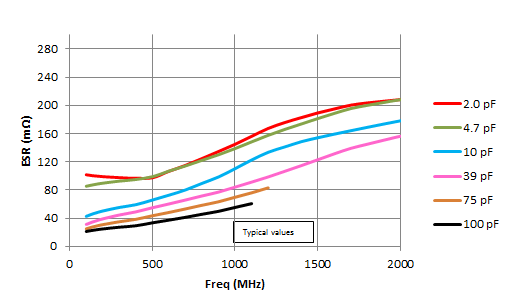
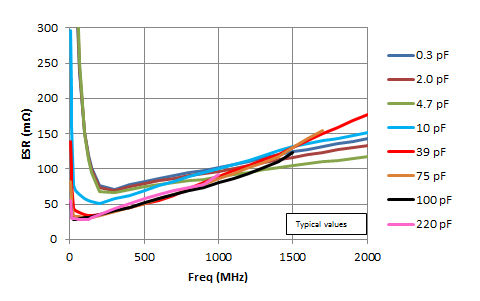
Q factor curves
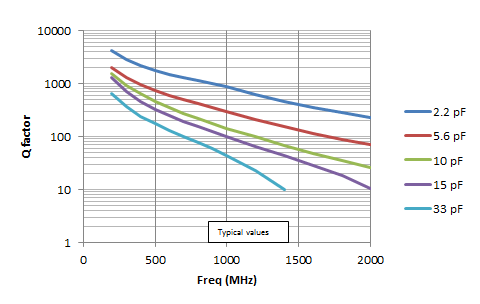
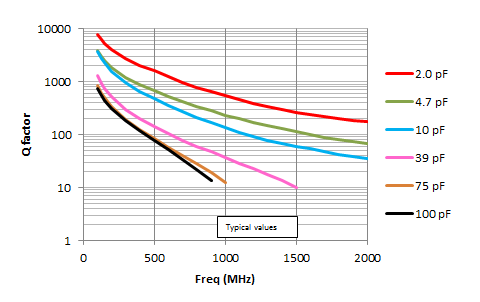
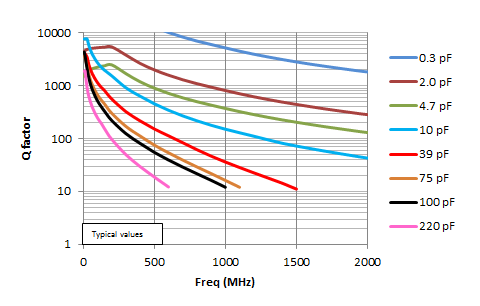
Max RF current
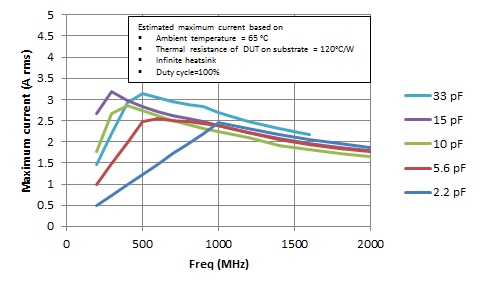
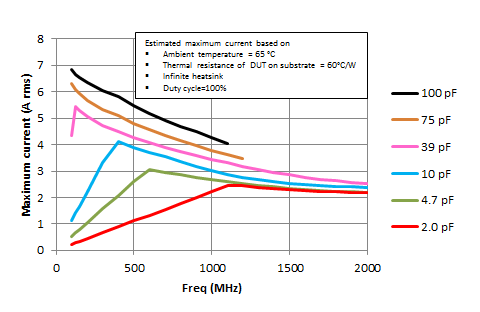
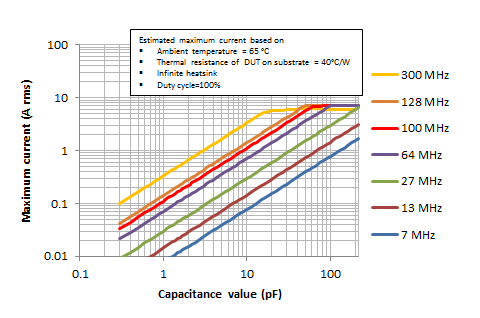
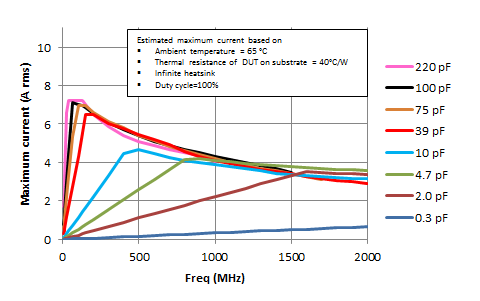
ESR curves

Q factor curves

Maximum RF Current (estimated)

Mechanical Characteristics
| Size | Units | Length | Width | Thickness | End Band |
|---|---|---|---|---|---|
| EIA 0402 | in | .040 ± .004 | .020 ± .004 | .020 ± .004 | .010 ± .006 |
Environmental Specifications
| Specification | Test Parameters | |
| Life test: | No mechanical damage. Capacitance change: ±3.0% or 0.3 pF Q>500 I.R. >1 G Ohms Breakdown voltage: 2.5 x WVDC | Applied voltage: 200% rated voltage, 50 mA max. Temperature: 125°±3°C Test time: 1000+48-0 hours |
| Thermal Cycle: | No mechanical damage. Capacitance change: ±2.5% or 0.25pF Q>2000 I.R. >10 G Ohms | 5 cycles of: 30±3 minutes @ -55°+0/-3°C, 2-3 min. @ 25°C, 30±3 min. @ +125°+3/-0°C, 2-3 min. @ 25°C Measure after 24±2 hour cooling period |
| Humidity, Steady State: | No mechanical damage. Capacitance change: ±5.0% or 0.50pF max. Q>300 I.R. = 1 G-Ohmbr /> Breakdown voltage: 2.5 x WVDC | Relative humidity: 90-95% Temperature: 40°±2°C Test time: 500 +12/-0 Hours Measure after 24±2 hour cooling period |
| Humidity, Low Voltage: | No mechanical damage. Capacitance change: ±5.0% or 0.50pF max. Q>300 I.R. = 1 G-Ohm min. Breakdown voltage: 2.5 x WVDC | Applied voltage: 1.5 VDC, 50 mA max. Relative humidity: 85±2% Temperature: 40°±2°C Test time: 240 +12/-0 Hours Measure after 24±2 hour cooling period |
| Vibration: | No mechanical damage. Capacitance change: ±2.5% or 0.25pF Q>1000 I.R. = 10 G-Ohm Breakdown voltage: 2.5 x WVDC | Cycle performed for 2 hours in each of three perpendicular directions. Frequency range 10Hz to 55 Hz to 10 Hz traversed in 1 minute. Harmonic motion amplitude: 1.5mm. |
Automotive applications (AEC-Q200): additional requirements – please consult factory for details.
How to Order
Valid options are shown except for Capacitance
A typical PN is QSCF250Q0R2A1GV001B. This part number breaks down as follows:
Capacitors High-Q MLC S-Series, 0402, Hi-Q NP0/C0G, 25V, 0.2pF±0.05pF, Ni/Sn (RoHS), Bulk
New Johanson Global Part Number Breakdown
* Not all combinations create valid part numbers, ask our Apps Engineering Team for assistance creating a valid part number Request for assistanceClick below to see the new Global Part Number Reference Chart for this product
legacy ordering information


